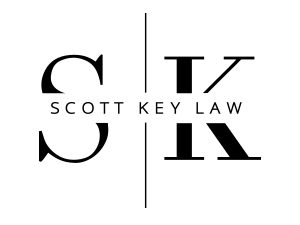This post is part of a series on legal writing. I suspect that what follows in the next few days will be contrarian and controversial.
People are not logical. And there is an inverse relationship between how emotion-driven you are and how logical you perceive yourself to be. Trust me on this one. Or close this essay right now, go out and find yourself a copy of anything by Robert Cialdini, or Amos Tversky and Daniel Kahneman. Then come back. Your audience, whether that audience is your uncle at the Thanksgiving dinner table, a judge reading a brief, or a jury of your client’s peers. I’ll illustrate what I mean with a little story about the best continuing legal education seminar I ever heard.
The Friday before I was to begin a horrific child abuse case, I had the good fortune to hear a CLE talk on persuasion. My client was accused, along with his girlfriend, of breaking the ribs, fingers, and fingers of a young baby. The case seemed virtually unwinnable. And the client had turned down multiple offers that seemed reasonable to me. I almost didn’t attend the lecture because the venue was far away, and I had the trial coming up.
Using techniques developed by James McComus, the speaker said that winning at trial comes down to understanding the “outcome levers.” An outcome lever is a fact or theme in the case that is so compelling that the case may turn on it. Outcome levers are seldom logical. And even if they are, they likely are bundled with a strong emotional component. At some point, a person asked him how you prepare for trial when you have multiple counts in the indictment that are paired with their own essential elements. Brett’s response was “nobody gives a damn about counts and elements. And, if you’re using this language, you’re playing a losing game.” The good news is that there are only a limited number of themes for outcome levels. And they are generally as follows.
* Violence. The State generally seizes upon these themes, particularly if the case involves a violent crime. It’s why medical examiners testify. While they may talk in terms of science and anatomy, they function merely as narrators to gruesome pictures. The savvy criminal defense attorneys can use the theme of violence as well. Perhaps they describe the violence that their client suffered at the hands of the victim, bullies from school, or another an abusive parent. Crime shows are popular. Crime documentaries and news shows are all the rage. And that’s because violence is an emotional hook. If you can find it, use it in your writing.
* Sex. Sex is not even a close second to violence as an emotional trigger. The two are co-champion. It’s why the State almost always has a winning hand if they can bring up something sexual about the defense — particularly if the accusation surrounds matters that are sexual in nature. the savvy defense attorney turns sex on the State — perhaps in the form of the sexual motivation of the accuser. Perhaps the main witness was jilted in some way or there is some sexual theme to employ against a co-Defendant, witness, or another villain in the case.
* Race. Race may sometimes not be an issue. However, if a jury or judge is a different race from the defendant, the accuser, the arresting officer, or one of the lawyers, then race is in your case. Only if literally every participant in a matter is the same race is race not an issue. Ignore this reality at your peril. Grasp this issue and come up with a way to turn it. If you do so, then you will be in possession of a valuable persuasive tool. The 2016 election turned on race. And the 2020 election is being waged on race. The 2024 presidential election will likely turn on race as well.
* Food. If you want to make your point memorable, try to think of a way to describe food. If you are writing in about travel, make it a point to describe food. If you are writing a work of fiction, try to find a way to go on and on about what your characters are eating. If you are working on a criminal matter, and some of the witnesses, the police officers, or the defendants met up for dinner, even if at a McDonalds, make it a point to be as descriptive as you can about the food. your story will be memorable.
*Senses. People are way more sensory than logical. Write about what people heated, the way the air smelled, the way it felt to hold objects, the way the food tasted, and the colors of things. A former district attorney in a metropolitan-Atlanta county used to ask witnesses a great question when he was direct examining them. He would say, “paint a picture with words.” To the officer responding to the scene, he would ask some background questions, such as “where were do you work? Who called you? Etc.” But those were all just set-ups to the real question. He would gesture to the jury and he would say “Paint a picture for us with words.” When you are writing, no matter what you are writing, pretend that you are that witness. Paint a picture with words
So, here is what I did to prepare for trial. I took out a single piece of paper. I drew a vertical line down the center of the page (a single page forced me to identify the critical few outcome levers for the case) I wrote down the State’s outcome levers on the left and mine on the right. And I literally shaped everything I planned — jury selection questions, opening statements, questions for cross-examination, questions for my witnesses, motions, and selection of wardrobe for the client — to neutralize their outcome levers and emphasize my own. I de-emphasized pretty much everything else, even the law, to maximize impact on the emotional levers.
I knew that the state would come strong with violence and would try to play upon the natural parenting instinct of jurors. Which was fine because my client — the child’s father — was in his late teens when the child was born. And the mother — my child’s girlfriend — was in her forties when the child was born. I could deflect the violence theme onto her by playing on another outcome lever. And that outcome lever was sex. As far as the parenting theme went, I could talk about my client’s mother’s abandonment of him and now his girlfriend had played upon that for her own prurient purposes. I countered violence with sex. And I did so at every turn. Literally, I let the law take care of itself. I focused on the critical few outcome levers.
And it worked. The jury convicted my co-Defendant on all counts and acquitted mine on all counts. He is now free and building a better life for himself.
Your term paper, work memo, a legal brief, speech to the city council about the need for a red light at a dangerous intersection, or a love letter is not a criminal jury trial. But if you pull out a sheet of paper you won’t have to look far to find some outcome levers — those things that, by themselves, will help you achieve whatever goal you are hoping to achieve with your writing.
Let the logic take care of itself. Lead with emotion. Follow with logic. People, including me and you, are not logical. If you know this fact, your writing — particularly your persuasive writing — will be infused with a sort of superpower.




